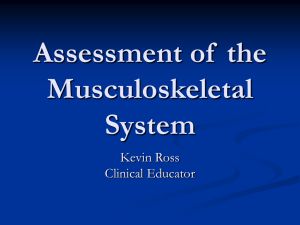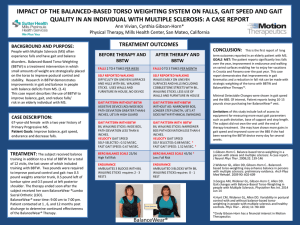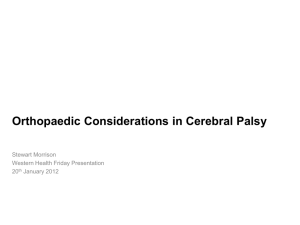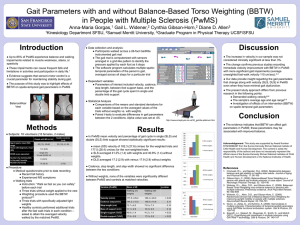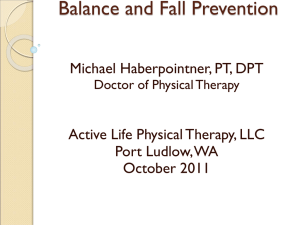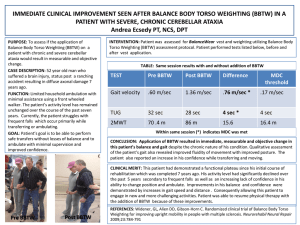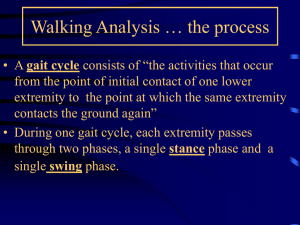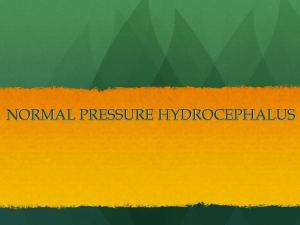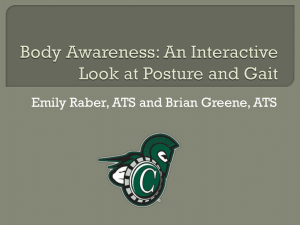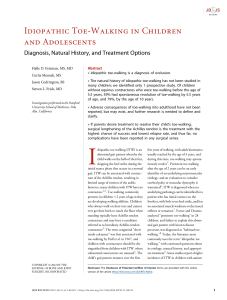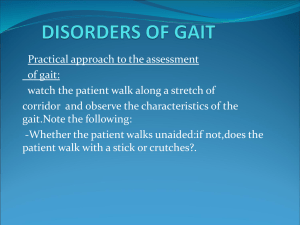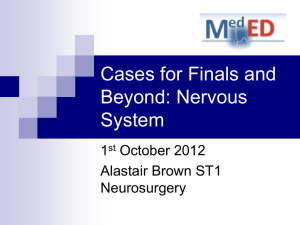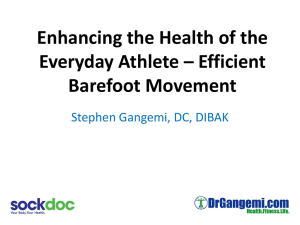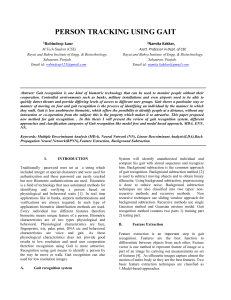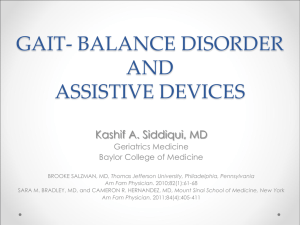Idiopathic Toe Walking
advertisement
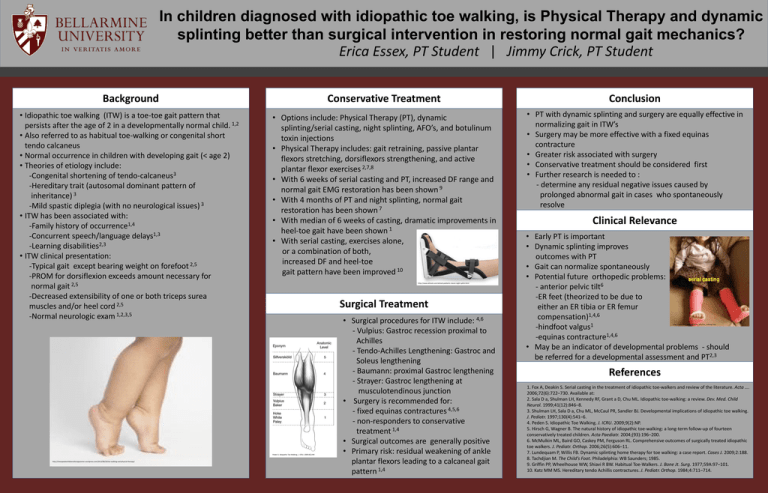
In children diagnosed with idiopathic toe walking, is Physical Therapy and dynamic splinting better than surgical intervention in restoring normal gait mechanics? Erica Essex, PT Student | Jimmy Crick, PT Student Background • Idiopathic toe walking (ITW) is a toe-toe gait pattern that persists after the age of 2 in a developmentally normal child. 1,2 • Also referred to as habitual toe-walking or congenital short tendo calcaneus • Normal occurrence in children with developing gait (< age 2) • Theories of etiology include: -Congenital shortening of tendo-calcaneus3 -Hereditary trait (autosomal dominant pattern of inheritance) 3 -Mild spastic diplegia (with no neurological issues) 3 • ITW has been associated with: -Family history of occurrence1,4 -Concurrent speech/language delays1,3 -Learning disabilities2,3 • ITW clinical presentation: 2,5 -Typical gait except bearing weight on forefoot -PROM for dorsiflexion exceeds amount necessary for normal gait 2,5 -Decreased extensibility of one or both triceps surea muscles and/or heel cord 2,5 1,2,3,5 -Normal neurologic exam Conservative Treatment Conclusion • Options include: Physical Therapy (PT), dynamic splinting/serial casting, night splinting, AFO’s, and botulinum toxin injections • Physical Therapy includes: gait retraining, passive plantar flexors stretching, dorsiflexors strengthening, and active plantar flexor exercises 2,7,8 • With 6 weeks of serial casting and PT, increased DF range and normal gait EMG restoration has been shown 9 • With 4 months of PT and night splinting, normal gait restoration has been shown 7 • With median of 6 weeks of casting, dramatic improvements in heel-toe gait have been shown 1 • With serial casting, exercises alone, or a combination of both, increased DF and heel-toe gait pattern have been improved 10 • PT with dynamic splinting and surgery are equally effective in normalizing gait in ITW’s • Surgery may be more effective with a fixed equinas contracture • Greater risk associated with surgery • Conservative treatment should be considered first • Further research is needed to : - determine any residual negative issues caused by prolonged abnormal gait in cases who spontaneously resolve http://www.alimed.com/alimed-pediatric-classic-night-splint.html Surgical Treatment Peden S. Idiopathic Toe Walking. J. ICRU. 2009;9(2):NP. http://chesapeakechildrenstherapycenter.wordpress.com/2013/08/26/toe-walking-and-physical-therapy/ • Surgical procedures for ITW include: 4,6 - Vulpius: Gastroc recession proximal to Achilles - Tendo-Achilles Lengthening: Gastroc and Soleus lengthening - Baumann: proximal Gastroc lengthening - Strayer: Gastroc lengthening at musculotendinous junction • Surgery is recommended for: - fixed equinas contractures 4,5,6 - non-responders to conservative 1,4 treatment • Surgical outcomes are generally positive • Primary risk: residual weakening of ankle plantar flexors leading to a calcaneal gait pattern 1,4 Clinical Relevance • Early PT is important • Dynamic splinting improves outcomes with PT • Gait can normalize spontaneously • Potential future orthopedic problems: 6 - anterior pelvic tilt -ER feet (theorized to be due to either an ER tibia or ER femur compensation)1,4,6 1 -hindfoot valgus 1,4,6 -equinas contracture • May be an indicator of developmental problems - should be referred for a developmental assessment and PT2,3 http://www.foot-pain-explained.com/toe_walking.html References 1. Fox A, Deakin S. Serial casting in the treatment of idiopathic toe-walkers and review of the literature. Acta …. 2006;72(6):722–730. Available at: 2. Sala D a, Shulman LH, Kennedy RF, Grant a D, Chu ML. Idiopathic toe-walking: a review. Dev. Med. Child Neurol. 1999;41(12):846–8. 3. Shulman LH, Sala D a, Chu ML, McCaul PR, Sandler BJ. Developmental implications of idiopathic toe walking. J. Pediatr. 1997;130(4):541–6. 4. Peden S. Idiopathic Toe Walking. J. ICRU. 2009;9(2):NP. 5. Hirsch G, Wagner B. The natural history of idiopathic toe-walking: a long-term follow-up of fourteen conservatively treated children. Acta Paediatr. 2004;(93):196–200. 6. McMulkin ML, Baird GO, Caskey PM, Ferguson RL. Comprehensive outcomes of surgically treated idiopathic toe walkers. J. Pediatr. Orthop. 2006;26(5):606–11. 7. Lundequam P, Willis FB. Dynamic splinting home therapy for toe walking: a case report. Cases J. 2009;2:188. 8. Tachdjian M. The Child’s Foot. Philadelphia: WB Saunders; 1985. 9. Griffin PP, Wheelhouse WW, Shiavi R BW. Habitual Toe-Walkers. J. Bone Jt. Surg. 1977;59A:97–101. 10. Katz MM MS. Hereditary tendo Achillis contractures. J. Pediatr. Orthop. 1984;4:711–714.
